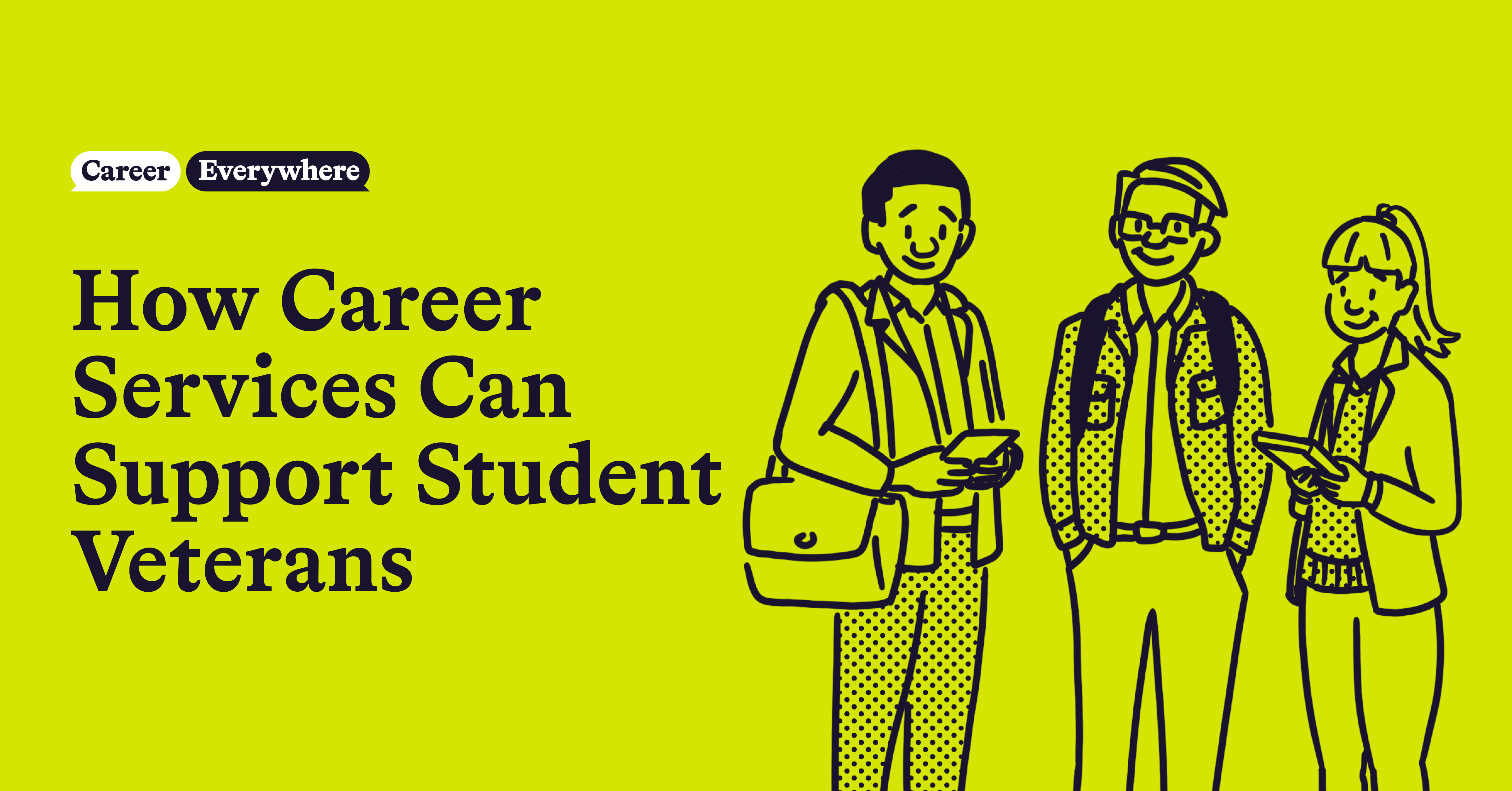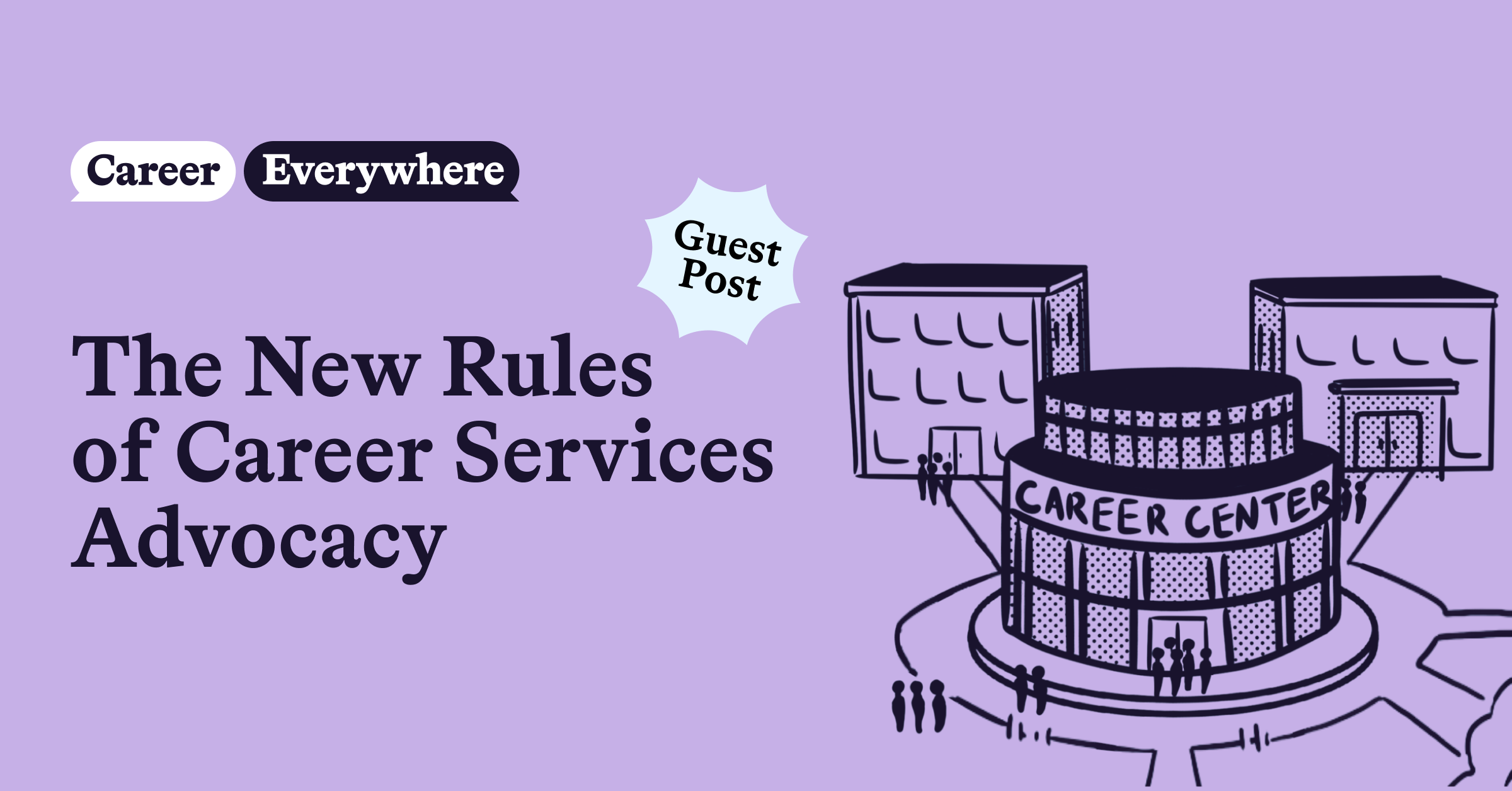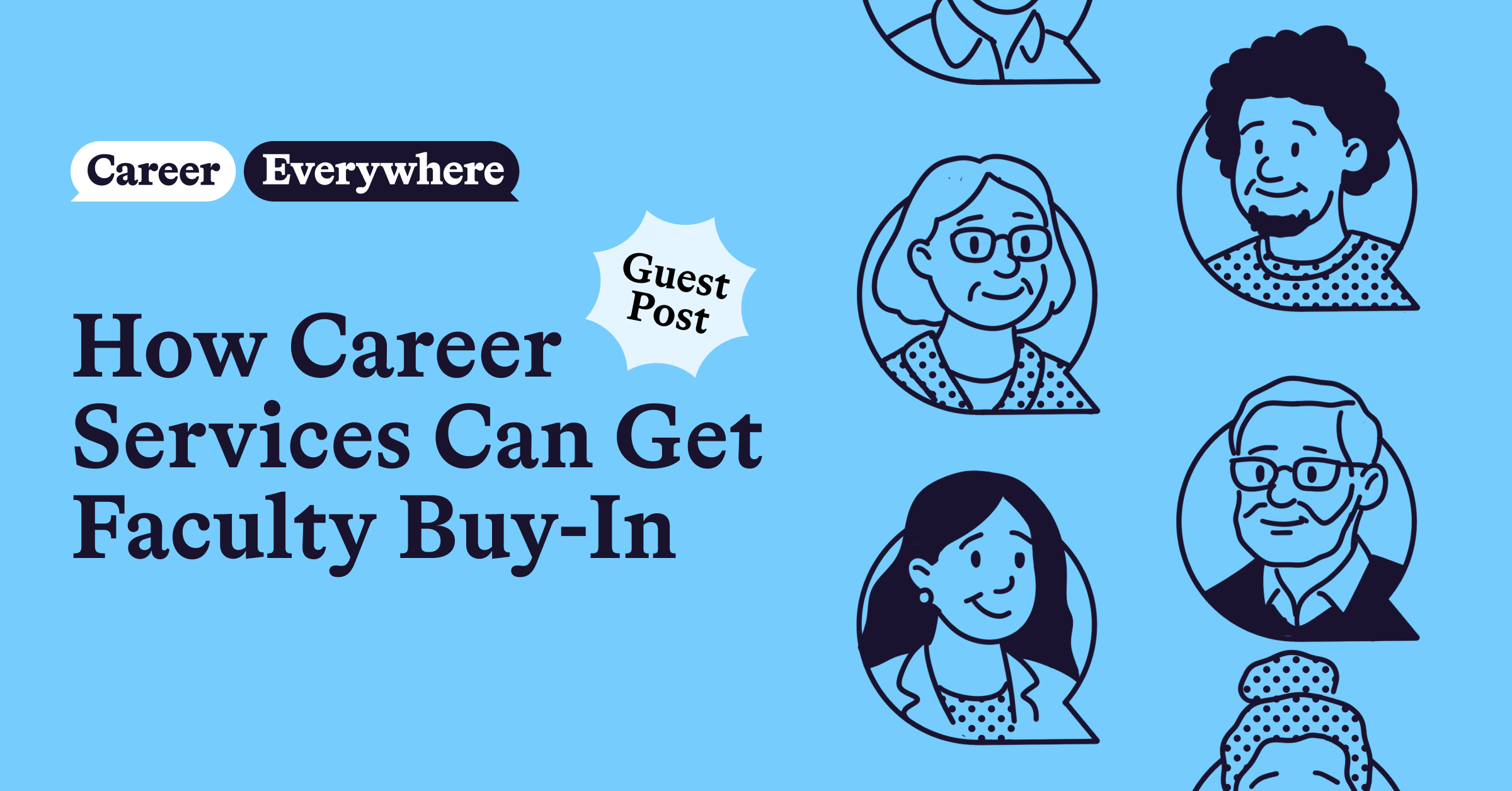
With such unique life and work experiences, veterans face many challenges as they transition out of the military and into the civilian workforce.
This is especially true for student veterans who face what Eric Stetson calls “a double whammy.” Not only do they have to figure out how to navigate their classes and a college campus (among students who are likely far younger than them), but they also have to figure out what they want their civilian career to look like—and then, how to translate their military experience and coursework into civilian terms.

It’s not an easy task.
That’s why it’s so important for career services teams to be educated and prepared on how to help veterans through career development and exploration with specialized support. With veterans making up nearly 5% of undergraduate students, it’s not an inconsequential number of students needing very personalized assistance.
To learn more about how career services can support student veterans, we recently sat down with Stetson, Director of Engagement and Enrollment at FourBlock, a nonprofit organization that prepares transitioning veterans and military spouses for careers in corporate America. Stetson is also a retired Army officer who served in the military for over 20 years.
In this article, we’ll dive into the challenges that student veterans face in terms of higher education and career exploration, how career services teams help student veterans translate their military skills to civilian jobs, and how career services can increase engagement with student veterans.
To learn more from FourBlock leader and retired Army officer Eric Stetson, check out his episode of the Career Everywhere podcast.
What unique challenges do student veterans face in terms of higher education and career exploration?
What exactly are student veterans managing when it comes to navigating higher education, and beyond that, career exploration? While this isn’t an exhaustive list, they’re typically:
- Transitioning back into civilian life after being in a military environment dominated by different age demographics and skill sets that may not align with university culture
- Balancing the responsibility of marriage and supporting children. More than 50% of veterans are married, and 52% have at least one child, according to Stetson.
- Working part-time, especially among women, to financially support their course load
- Resolving medical issues and disability claims with the VA (Veterans Affairs)
- Managing post-traumatic stress disorder (affecting approximately 20-25% of student veterans) and taking advantage of available resources
“As the saying goes, ‘If you’ve met a veteran, you’ve met one veteran,’ and that’s so true because the veteran constituency is such a diverse group of people from across the nation in every conceivable background, every part of the country, SES, you name it,” Stetson said. “You don’t want to make assumptions, but those are some of the typical challenges and issues that veterans are working through as they get back into school.”
Veterans may also deal with difficulties adjusting to the culture and approach that career services offices provide for their students. Struggles with self-identification, knowing their passions and interests, and their future goals and aspirations may happen as a result of the “team” over “I” mentality often associated with the military.
Tackling this mentality early and learning more about their interests and motivations will not only help to encourage confidence and self-assuredness, but it will save time and money when choosing a degree path.
“I think one of the biggest challenges is helping a veteran to reclaim themselves as an individual to figure out that way ahead in a future career, and then understand the things they need to do in addition to that degree to get there,” Stetson said.
“The military strips away a lot of individualism, especially early in the service as a person is learning how to adapt to and become regimented and disciplined to a very new way of life that requires a lot of rigor, discipline, and focus. And so, part of the challenge is bringing that individual back out of that service person and into the light to say, ‘What are you about? What drives you? What do you enjoy? What are you curious about?’ And have them figure that out,” Stetson added.
How can career services teams help student veterans translate their military skills to civilian jobs?
Another challenge that student veterans face is the translation of their acquired military skills and experiences into civilian jobs and degree paths. Before they get to that point though, veterans must be able to describe and explain their skills and experiences in a way that is understandable and relatable to career services professionals and other professional networks they’ll encounter.
Skills in training, evaluation, counseling, risk assessment, risk mitigation control, management, resource organization, operations, and project management are all highly valuable skills that a veteran or infantry member may have, but they should be broken down in a way that is relevant and applicable to the employment market, rather than the military structure.
Encouraging veterans to simplify their language and depart from jargon, slang, and acronyms that are commonly used in the military helps advisors and peers to better understand their backgrounds. Stetson also encourages career services professionals to impart constructive criticism and challenging prompts for their students, not shying away from a LinkedIn makeover or a resumé smackdown.
“They need that feedback. They want that feedback. Obviously, don’t be mean about it, but you’re not going to hurt their feelings. Most of them have experienced pretty stressful situations both in training, some of them in deployments, and they’ve learned how to handle that,” Stetson said. “They’re not going to be too riled up or upset if you’re very blunt with them about what they’re bringing to the table. They need that and they want that because they feel like a fish out of water, so they need that help.”
To help student veterans translate their skills to the language of the civilian workforce, Stetson recommends this skills translator tool. He also shared FourBlock’s popular podcast, which features veterans, enlisted NCOs (non-commissioned officers), career transition experts, and industry experts as a part of their overall resource catalog, available through their website.
For a full list of recommended student veteran resources, check out this list.
How can career services increase engagement with student veterans?
As mentioned above, one of the biggest transitions that student veterans face is the “team” to “I” or “me” mentality. It can be incredibly difficult to switch back to prioritizing their own wants, needs, and goals instead of a collective want, need, or goal. With great self-sufficiency and independence, there may be a hesitation to ask for help when it’s needed and not readily available in a physical or digital format.
To combat that, career services teams can do a few things:
- Create, curate, and distribute resources that are specialized to student veterans in a way that’s accessible 24/7. For many career centers, that could look like building a community page on the career center website that’s dedicated to student veterans. Here’s an example from Arizona State University that includes articles, videos, job market data, veteran organizations on campus, and more.
- Continuously share those resources with student veterans and remind them the career center is there to support them.
- Offer student orientations and programming specifically for veterans that partner with related organizations on campus.
Establishing partnerships with campus and community entities and creating relevant, interesting, engaging content and resources increases the likelihood of capturing and keeping the attention of these students as they settle in and begin to put out feelers for networking and advising.
“I often tell career services and student veteran organizations on campus, ‘Ask us [FourBlock] to come to campus, promote us, use us as the honey or the attractant to get veterans to show up,’” Stetson said. “Get creative like that, so they say, ‘Okay, this is an event I want to go to. I’m going to get to talk to these folks that do free interview training.’”
For more information on free interview training for student veterans, check out Candorful.
Additionally, if your school does not already partner with these organizations, Student Veterans of America and the Warrior-Scholar Project provide excellent networking opportunities, online programs, community-based support, and more.
Ultimately, Stetson said it’s crucial to not make assumptions, rely on stereotypes, or lump veterans together (because as he said earlier, every veteran is different). Instead, be sensitive to their life circumstances, mindful of their past service, and relentlessly curious in your approach to help them explore potential career paths.
To offer more curated resources for student veterans on your campus, check out uConnect’s new Curation Kit for student veterans.
Conclusion
Student veterans come from diverse backgrounds and face several obstacles and challenges as they re-enter civilian life and pursue post-secondary education.
By engaging and supporting student veterans early, helping them translate their skills and experiences, and providing resources that instill confidence, career services teams can more effectively serve those who have served us.
To learn more from FourBlock leader and retired Army officer Eric Stetson, check out his episode of the Career Everywhere podcast.


